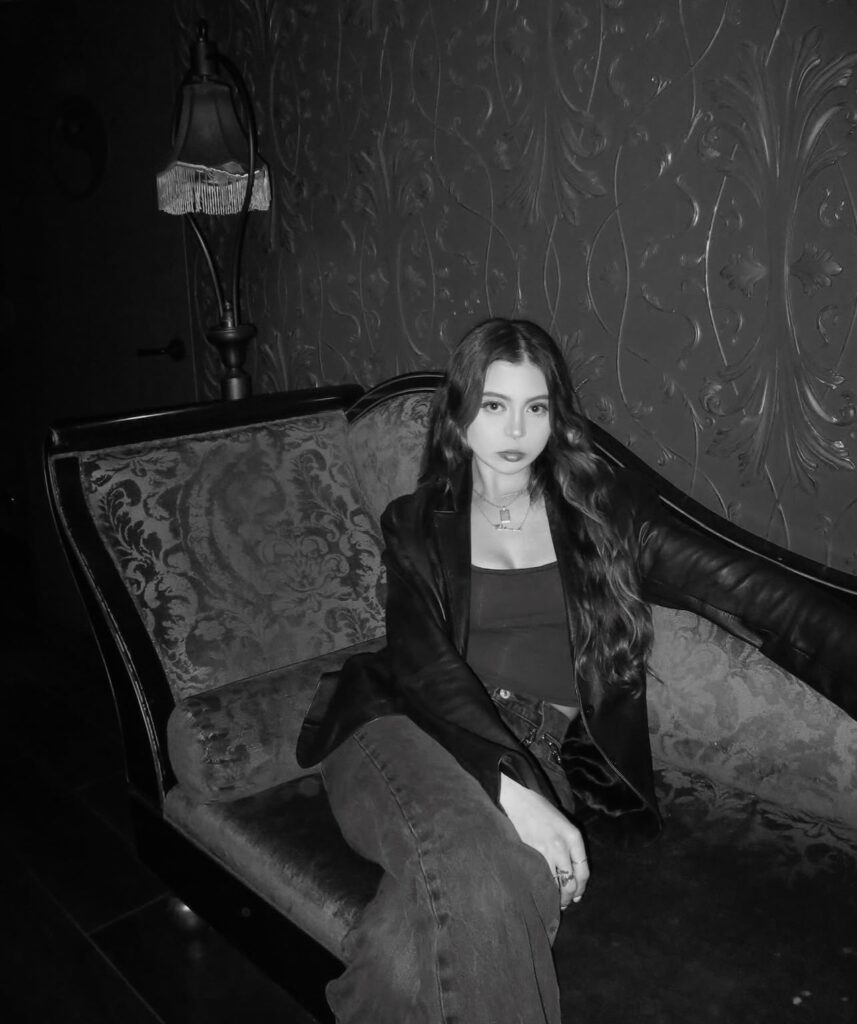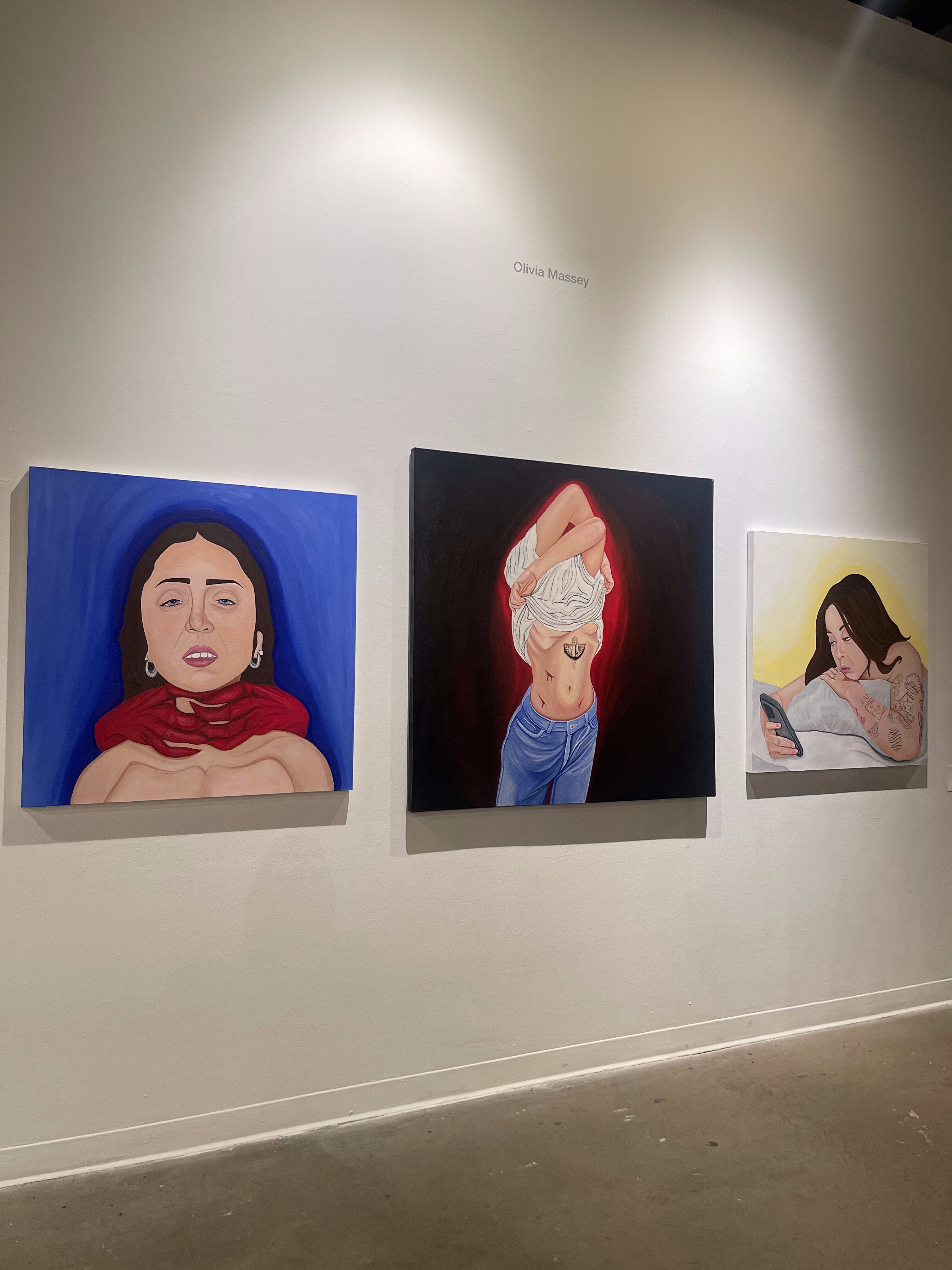
In The Mind of Olivia Massey
Under the soft, diffused spotlight, three portraits sit atop the white walls in heavy contrast to the bold crimson and cobalt accents on the canvas. Olivia Massey stands fearlessly in front of her grueling months-long work, and I—an especially proud friend— was excited to be attending her exhibition at the Redline Art Center. What art viewers don’t typically see is the behind-the-scenes of the artist’s creative process, and how the evolution from conception to execution is a complex one that involves thoughtful meditations. For Massey, this is fitting for her thesis ‘The Art of Introspection’. I had the pleasure of sitting in on the process, from photographing her inspiration pictures to discussing and visiting the in-progress canvases in her basement studio. The ideation of her brainchild became all-consuming, with a period of incubation and bouts of uncertainty and redirection. The artistic process, as we know, is non-linear. It ebbs and flows much like our emotions, and requires a wakening of the subconscious. Then comes the motivation to transform a mere idea into palpable substance. When the portraits received their final gloss, a powerful statement was born.
Massey’s motivation stems from her contemplation of personal, reflective experiences and deliberation on the social and political climate of today’s world. Her usual style is highly surrealist, and this exhibition draws heavily from the influences of Frida Kahlo and Louise Bourgeois. With these being self-portraits and considering the subject matter at hand, Massey faced a difficult process. There’s no doubt drawing herself in this light stirs up hidden emotions, confronting insecurities and strife. Putting paint on canvas becomes an act of manifesting the message she wants to convey to her audience. This end goal helped guide her to the completion of the three sizable portraits.

The three portraits all include her as the subject matter. The first being her with a silent suffering and agonizing expression, with the metaphorical hands of perceived freedom that strangle her neck. In the second, she, again, as a representation of the existential dread we face as a society from the overbearing news of political and national conflict. And in my personal favorite, The Martyr, which is the largest of the three. This portrait was especially meant to evoke strong emotions from the viewer, and it certainly does. It is graphic in nature, with inflicted wounds to her body. This depicts powerful symbolism of women’s experience, the violence and threat to marginalized communities in the country, and the skepticism of government powers. Massey is highly activistic in her work and wishes to shed light on the issues of the American lived experience.
Massey continues to use her voice as an artist to portray themes of social issues and self-reflective pieces in her art. Her work is distinct as she joins fellow activist artists in divulging profound messages. With the days leading up to the anticipated event, Massey grew restless and eager to unveil her creation. The exhibition and cessation of the project were an incredible feat accomplished by Massey. As a viewer, I feel urged to challenge and remain skeptical of current affairs—to shed light on those affected. As a friend, I can’t wait to see more of what Massey has in store for us.


